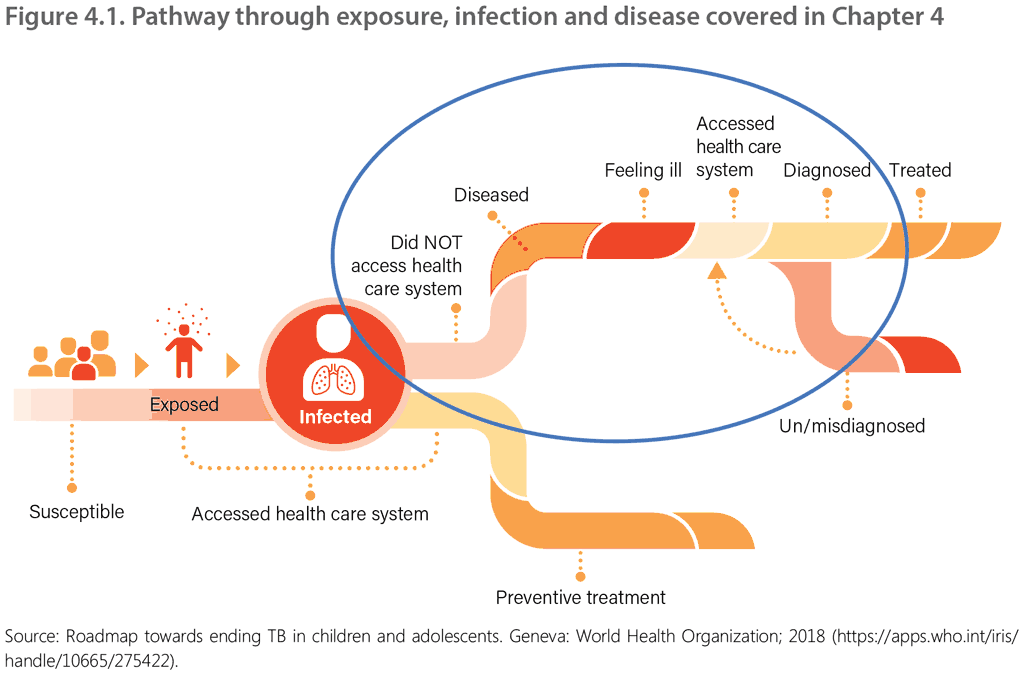Book traversal links for 4.1 Introduction
Diagnostic evaluation is the step in the care cascade after screening. Children and adolescents who screen positive during contact investigation or at health facility-based screening, and those who present to a health care facility with signs and symptoms of TB and who are identified as having presumptive TB must be evaluated further for TB disease.
The diagnosis of TB disease is usually made based on careful clinical assessment, supported by relevant tests and investigations. Most young children with TB have paucibacillary disease, meaning they harbour relatively few TB bacilli. Consequently, diagnostic tests that detect TB bacilli are not as sensitive in young children as in older adolescents and adults with TB. Young children cannot easily produce sputum samples, and the use of alternative sample types that can be collected in a less invasive way is important for obtaining bacteriological confirmation.
This chapter describes TB diagnostic approaches for children and adolescents, including children with drug-susceptible TB, DR-TB, PTB and EPTB. PTB is the most common type of TB in children and adolescents. in children usually involves disease in the intrathoracic lymph nodes, but in adolescents it more commonly resembles adult-type disease with cavitary lesions (4, 6). This chapter relates to the section of the pathway highlighted in blue in Figure 4.1.

 Feedback
Feedback